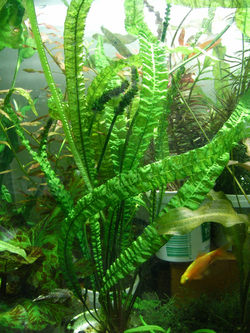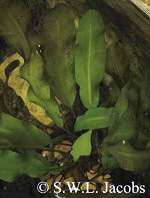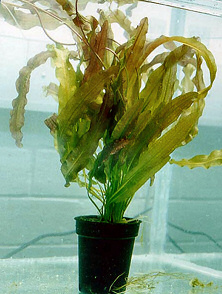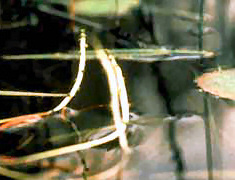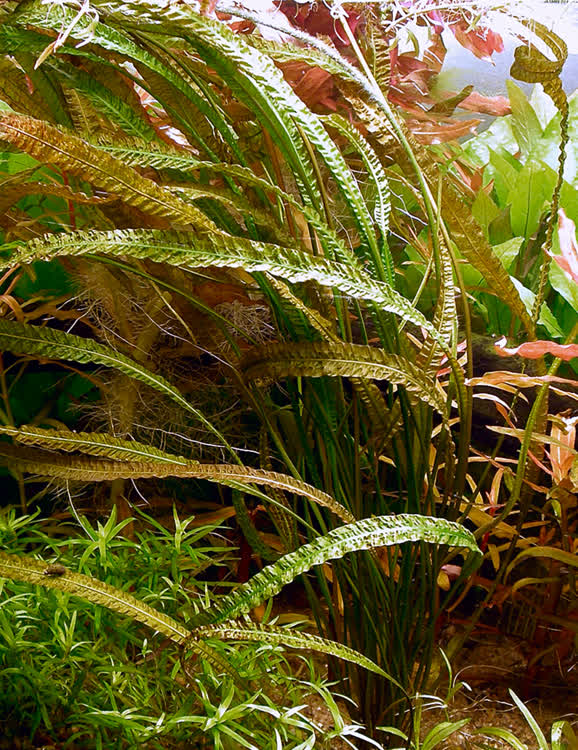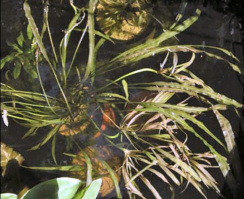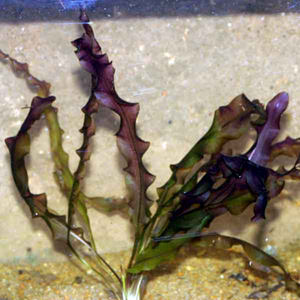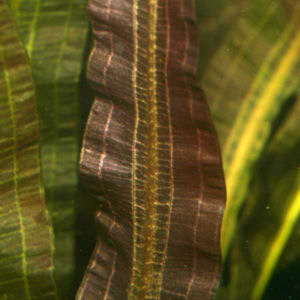| 1. | Proliferous offshoots formed at tip of peduncle; plants rarely flowering | 1. A. proliferus |
| 1* | Proliferous offshoots not formed on plants; plants regularly flowering | 2 |
| 2. | Inflorescence branched with two spikes | 3 |
| 2* | Inflorescence unbranched with one spike | 5 |
| 3. | Flowers white (rarely pink); tepals 1, with 13 or more veins | 2. A. distachyos |
| 3* | Flowers yellow, yellow-green, or green; tepals 2–6, 1-veined | 4 |
| 4. | Tepals 6; seeds (2.6–)5.1–6.2(–7.0) mm long; leaves all floating | 3. A. hexatepalus |
| 4* | Tepals 2; seeds 2.1–3.2 mm long; leaves all submersed | 4. A. lancesmithii |
| 5. | Leaves all submersed, slightly to strongly bullate | 6 |
| 5* | Leaves submersed and/or floating, not bullate | 7 |
| 6. | Spathe persistent, to 2.5 cm long; inflorescence to 5.5 cm long; peduncle about same
diameter as inflorescence rachis | 5. A. bullosus |
| 6* | Spathe caducous, to 1.5 cm long; inflorescence to 34 cm long; peduncle much broader
than inflorescence rachis | 4. A. lancesmithii |
| 7. | Plants mainly producing floating leaves; floating blades mostly cordate at base; seeds
with obvious double testa | 6. A. queenslandicus |
| 7* | Plants mainly producing submersed leaves or submersed and floating leaves;
floating blades mostly obtuse, some cuneate or truncate at base; seeds with a single
testa or, if double, the second seed coat closely adhering and difficult to detect | 8 |
| 8. | Submersed leaves narrow, 0.9–3 mm wide; seeds 0.7–1.4 mm long | 7. A. kimberleyensis |
| 8* | Submersed leaves broad, 5–60 mm wide; seeds 1.2–4.9 mm long | 9 |
| 9. | Fruit oval and thick-coated; seed coat closely adhering to embryo and difficult to
detect, or tightly-fitting and very thin; floating leaves rarely formed | 10. A. elongatus |
| 9* | Fruit elliptic and papery; seeds with a loose outer coat, easily separated from embryo;
floating leaves commonly formed | 10 |
| 10. | Seeds broadly elliptic, nearly oval, (1.1–)1.5–2.8 mm wide | 8. A. euryspermus |
| 10* | Seeds narrowly elliptic, 0.7–1.6 mm wide | 9. A. vanbruggenii |
